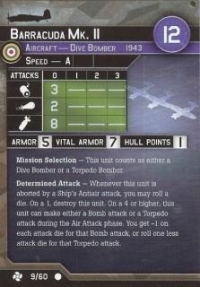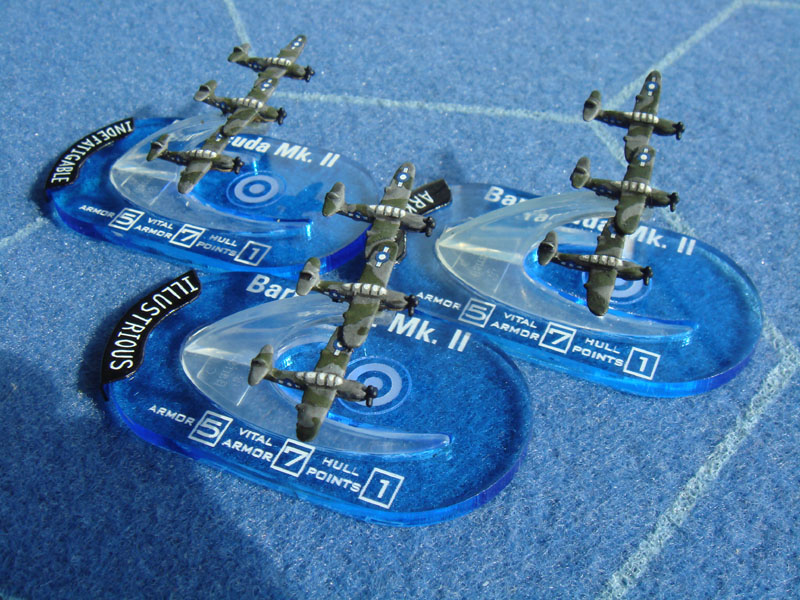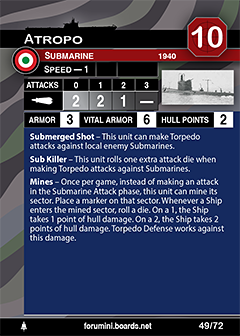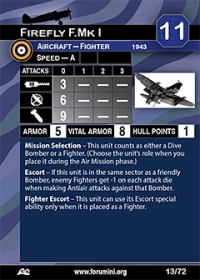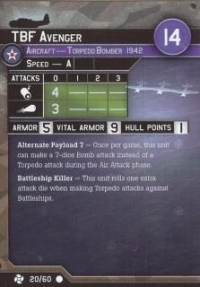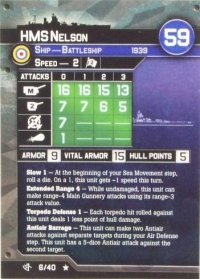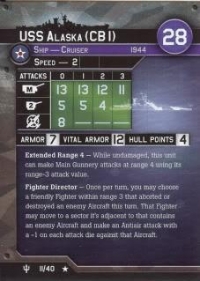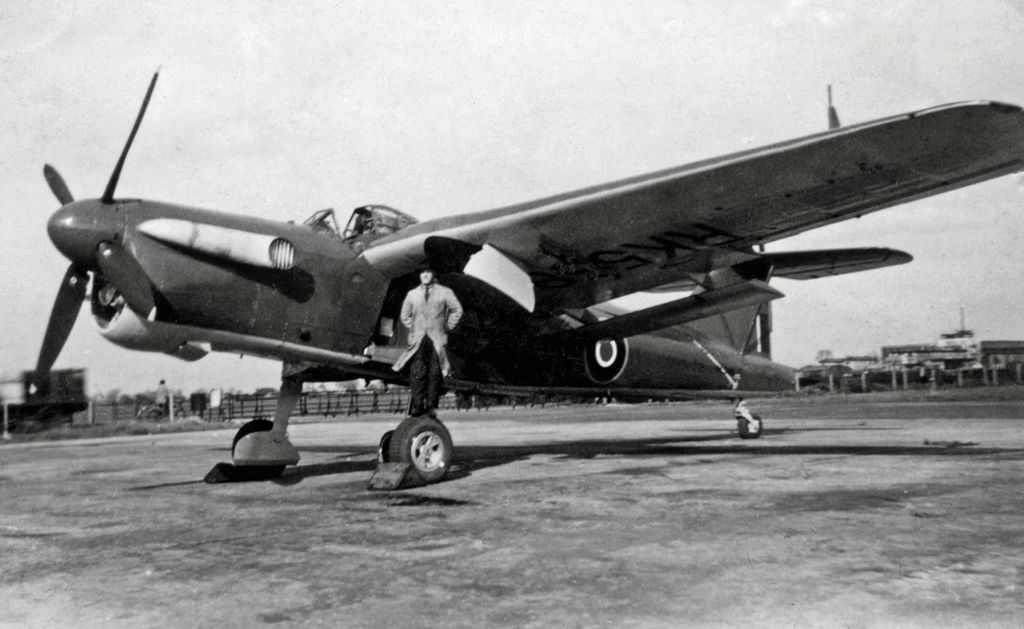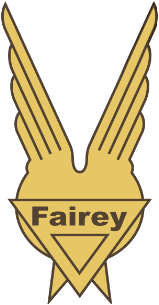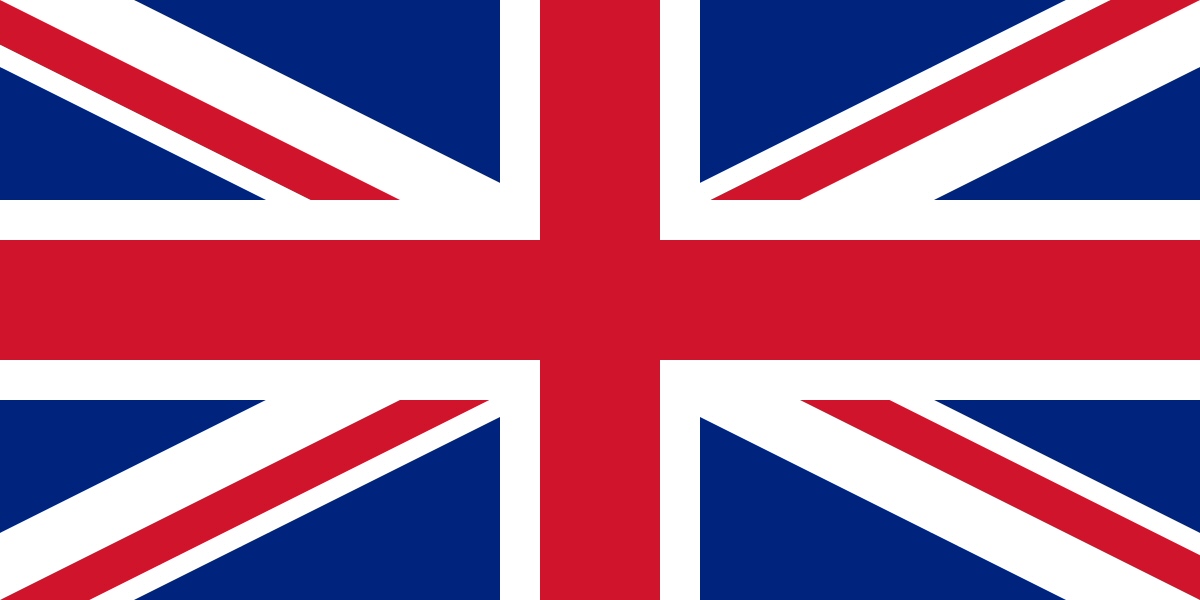Barracuda Mk. II
| General Type | Aircraft |
| Unit Type | Dive Bomber |
| Cost | 12 |
| Set | Task Force |
| Manufacturer | Hasbro |
| Available | 1943 |
| Set ID | 9 |
| Game Class Limits | Fairey |
| Country | United Kingdom (Details) |
| Prototype | Aircraft, Propeller, Fairey Barracuda (Details) |
| Armor | 5 |
| Vital | 7 |
| Hull Points | 1 |
| Speed | 139 |
| Primary | 0/0/0/0 |
| Torpedoes | 2/0/0/0 |
| ASW | 3/-/-/- |
| Bomb | 8 |
| Special Ability | Mission Selection |
| Special Ability | Determined Attack |
| Game Rarity | C |
Click to see the details
market
Click to see the details
history
Aircraft History:
The Fairey Barracuda was a British carrier-borne torpedo and dive bomber designed by Fairey Aviation. It was the first aircraft of this type operated by the Royal Navy's Fleet Air Arm (FAA) to be fabricated entirely from metal.
The Barracuda was developed as a replacement for the Fairey Albacore biplanes. Development was protracted due to the original powerplant intended for the type, the Rolls-Royce Exe, being cancelled; it was replaced by the less powerful Rolls-Royce Merlin engine. On 7 December 1940 the first Fairey prototype conducted its maiden flight; early testing revealed it to be somewhat underpowered. However, the definitive Barracuda Mk II had a more powerful model of the Merlin engine, while later versions were powered by the larger and even more powerful Rolls-Royce Griffon engine. The type was ordered in bulk to equip the FAA; in addition to Fairey's own production line, Barracudas were also built by Blackburn Aircraft, Boulton Paul, and Westland Aircraft.
The type participated in numerous carrier operations during the conflict, being deployed in the Atlantic Ocean, Mediterranean Sea, and the Pacific Ocean against the Germans, Italians, and Japanese respectively during the latter half of the war. One of the Barracuda's most noteworthy engagements was a large-scale attack upon the German battleship Tirpitz on 3 April 1944. In addition to the FAA, the Barracuda was also used by the Royal Air Force, the Royal Canadian Navy, the Dutch Naval Aviation Service and the French Air Force. Following its withdrawal from service during the 1950s, no intact examples of the Barracuda were preserved despite its once-large numbers, although the Fleet Air Arm Museum has ambitions to assemble a full reproduction.
The Barracuda was developed as a replacement for the Fairey Albacore biplanes. Development was protracted due to the original powerplant intended for the type, the Rolls-Royce Exe, being cancelled; it was replaced by the less powerful Rolls-Royce Merlin engine. On 7 December 1940 the first Fairey prototype conducted its maiden flight; early testing revealed it to be somewhat underpowered. However, the definitive Barracuda Mk II had a more powerful model of the Merlin engine, while later versions were powered by the larger and even more powerful Rolls-Royce Griffon engine. The type was ordered in bulk to equip the FAA; in addition to Fairey's own production line, Barracudas were also built by Blackburn Aircraft, Boulton Paul, and Westland Aircraft.
The type participated in numerous carrier operations during the conflict, being deployed in the Atlantic Ocean, Mediterranean Sea, and the Pacific Ocean against the Germans, Italians, and Japanese respectively during the latter half of the war. One of the Barracuda's most noteworthy engagements was a large-scale attack upon the German battleship Tirpitz on 3 April 1944. In addition to the FAA, the Barracuda was also used by the Royal Air Force, the Royal Canadian Navy, the Dutch Naval Aviation Service and the French Air Force. Following its withdrawal from service during the 1950s, no intact examples of the Barracuda were preserved despite its once-large numbers, although the Fleet Air Arm Museum has ambitions to assemble a full reproduction.
Manufacturer:
The Fairey Aviation Company Limited was a British aircraft manufacturer of the first half of the 20th century based in Hayes in Middlesex and Heaton Chapel and RAF Ringway in Lancashire. Notable for the design of a number of important military aircraft, including the Fairey III family, the Swordfish, Firefly, and Gannet, it had a strong presence in the supply of naval aircraft, and also built bombers for the RAF.
After World War II the company diversified into mechanical engineering and boat-building. The aircraft manufacturing arm was taken over by Westland Aircraft in 1960. Following a series of mergers and takeovers, the principal successor businesses to the company now trade as FBM Babcock Marine Ltd, Spectris plc, and WFEL (formerly Williams Fairey Engineering Limited), the latter manufacturing portable bridges.
After World War II the company diversified into mechanical engineering and boat-building. The aircraft manufacturing arm was taken over by Westland Aircraft in 1960. Following a series of mergers and takeovers, the principal successor businesses to the company now trade as FBM Babcock Marine Ltd, Spectris plc, and WFEL (formerly Williams Fairey Engineering Limited), the latter manufacturing portable bridges.
Country:
The United Kingdom, made up of England, Scotland, Wales and Northern Ireland, is an island nation in northwestern Europe. England – birthplace of Shakespeare and The Beatles – is home to the capital, London, a globally influential centre of finance and culture. England is also site of Neolithic Stonehenge, Bath’s Roman spa and centuries-old universities at Oxford and Cambridge.
Item created by: Lethe
on 2015-05-31 17:46:30
Last edited by: gdm on 2019-11-28 17:28:04
If you see errors or missing data in this entry, please feel free to log in and edit it. Anyone with a Gmail account can log in instantly.
Last edited by: gdm on 2019-11-28 17:28:04
If you see errors or missing data in this entry, please feel free to log in and edit it. Anyone with a Gmail account can log in instantly.


